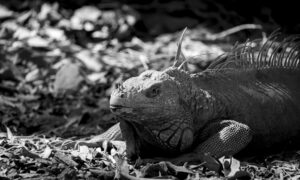Robert Boyle was a distinguished natural philosopher, chemist, physicist, alchemist, and inventor. He is widely celebrated for his foundational role in developing modern chemistry and advancing the experimental scientific method. Born into a wealthy Anglo-Irish family, Boyle’s relentless curiosity and intellectual rigor made him one of the most influential scientists of the 17th century. His groundbreaking work set the stage for scientific inquiry as we know it today.
Early Passion for Knowledge
From an early age, Boyle displayed an extraordinary intellect and a deep fascination with the natural world. He immersed himself in various disciplines, including physics, alchemy, and mechanical invention. However, it was in the field of chemistry that he made his most enduring mark. Boyle’s Law—describing the inverse relationship between the pressure and volume of a gas—remains a fundamental scientific principle.
The Skeptical Chemist and Scientific Reform
One of Boyle’s most significant achievements was the publication of The Skeptical Chemist. This influential work challenged the established ideas of alchemy and questioned the notion of transmuting elements. Boyle emphasized the importance of careful experimentation and observation, helping to shift scientific practice toward a more empirical and methodical approach.
Faith and Science
Boyle was also deeply religious and sought to harmonize his Anglican faith with his scientific endeavors. He explored the intersection of science and theology in many of his writings, believing that the study of nature could enhance understanding of the divine. His ability to blend scientific rigor with spiritual reflection set him apart from many of his contemporaries.
A Privileged Upbringing
Born into a privileged family in Ireland, Boyle was the son of Richard Boyle, the Earl of Cork, a man of considerable wealth and land. From a young age, Robert received an exceptional education, studying Latin, Greek, French, and Irish. His true interest, however, lay in uncovering the secrets of nature and the universe.
Education and Early Influences
At the age of eight, Robert and his brother Francis were sent to Eton College in England, where his love for learning blossomed. Under the mentorship of Sir Henry Wotton, the college provost and a family friend, Boyle was introduced to a wide range of intellectual subjects. Despite this broad exposure, science captivated him most.
Encounter with Galileo
In 1641, Boyle traveled to Italy with a French tutor and had the extraordinary opportunity to meet the legendary astronomer Galileo Galilei in Florence. This meeting left a lasting impression on Boyle, deepening his fascination with astronomy and the broader mysteries of the cosmos.
The Invisible College and Scientific Community
Returning to England in the mid-1640s, Boyle settled at Stalbridge House and set up a laboratory. He joined the Invisible College, a group of thinkers and scientists committed to advancing knowledge. This circle would eventually evolve into the Royal Society of London. Boyle frequently attended meetings in both London and Oxford.
Struggles in Ireland and Return to Oxford
In 1652, Boyle moved to Ireland to manage family estates but quickly became disheartened by the lack of scientific infrastructure. In a letter, he described Ireland as a “barbarous country” devoid of proper equipment for chemical research. In 1654, he returned to Oxford, renting rooms at University College, where he could pursue his studies without interruption.
Innovations in Pneumatics
At Oxford, Boyle collaborated with Robert Hooke to improve upon Otto von Guericke’s air pump. Their refined version—dubbed the “Machina Boyleana” or “pneumatical engine”—enabled them to perform revolutionary experiments on the nature of air. Boyle coined the term “factitious airs” and famously established the inverse relationship between gas pressure and volume, known today as Boyle’s Law.
Rise in Scientific Recognition
Boyle’s work earned widespread recognition. In 1663, the Invisible College became the Royal Society of London for Improving Natural Knowledge, and Boyle was appointed to its council. Though he later declined the presidency of the Society in 1680, his influence continued to shape the scientific world.
Later Years and Lasting Contributions
As he aged, Boyle’s health declined, and he began to withdraw from public life, focusing instead on writing and conducting private research. Despite his illness, his intellectual vigor never waned. He continued to pursue knowledge with the same passion he had in his youth.
The Enduring Legacy of Robert Boyle
Boyle died in 1691, just a week after the death of his beloved sister Katherine, with whom he had shared a home and scientific interests for over twenty years. His funeral was held at St. Martin-in-the-Fields, where Bishop Gilbert Burnet delivered a moving sermon in his honor.
Boyle’s will included provisions for the establishment of the Boyle Lectures, a series still delivered today that explore the relationship between science and religion. His lifelong commitment to learning, discovery, and education endures as a beacon for future generations of scientists and thinkers.
Robert Boyle’s legacy is that of a man who bridged faith and reason, science and philosophy. His unwavering pursuit of truth and his pioneering experiments laid the foundations for modern chemistry. His story serves as an enduring reminder that curiosity, perseverance, and integrity can lead to discoveries that shape the course of human history.









